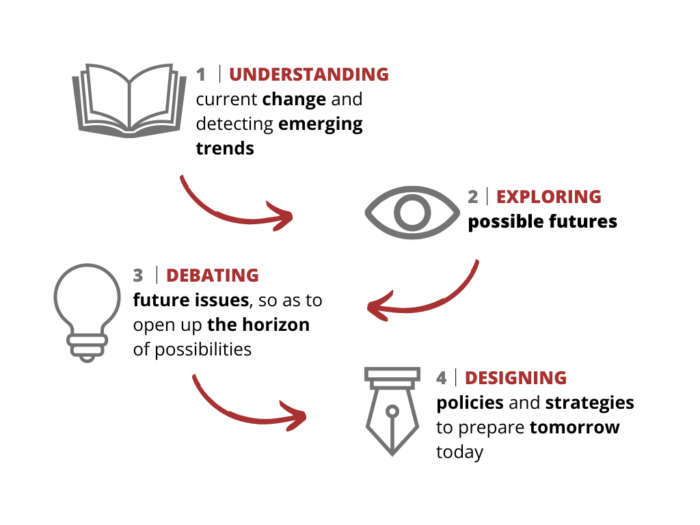In France, after several earlier initiatives that had varying degrees of success, a new scheme for youth employment led to the creation of more than 200 000 jobs in 1999 in areas such as work in the community, culture, sports and the environment. The contracts are full-time for five years, with substantial subsidies for the employers. The scheme has made it possible to meet a wide range of unsatisfied needs. Nevertheless, as the Futurouest agency stresses in its evaluation, several problems remain, such as how to reduce the bias towards service jobs, how to avoid under-using the young people’s skills, how to increase the number of jobs suitable for those with secondary vocational qualifications [certificat d’aptitude professionnelle (CAP) and brevet d’études professionnelles (BEP)], and how to increase the involvement of the private sector.
Futurouest suggests three possible scenarios for the future of these “new services-new jobs”:
– to extend the contracts beyond the current five years, and accept some drawbacks: the risk of jobholders being overqualified, low pay and disappointing career prospects;
– the scheme gradually declines in the long run: after its initial success, the scale of job creation falls steadily and ultimately fails as a result of financial problems and the lack of candidates – job holders quit because they find they are overqualified and because of the absence of long-term training;
– finally, the desirable scenario, in which the youth employment scheme, in competition with other forms of employment, causes the hopes for the future to come true and so gives rise to new patterns of entrepreneurial behaviour: new jobs for young people are created in the private sector providing services to firms and services in the community, as was repeatedly suggested in the mid 1990s.
Les emplois-jeunes
Cet article fait partie de la revue Futuribles n° 254, juin 2000


